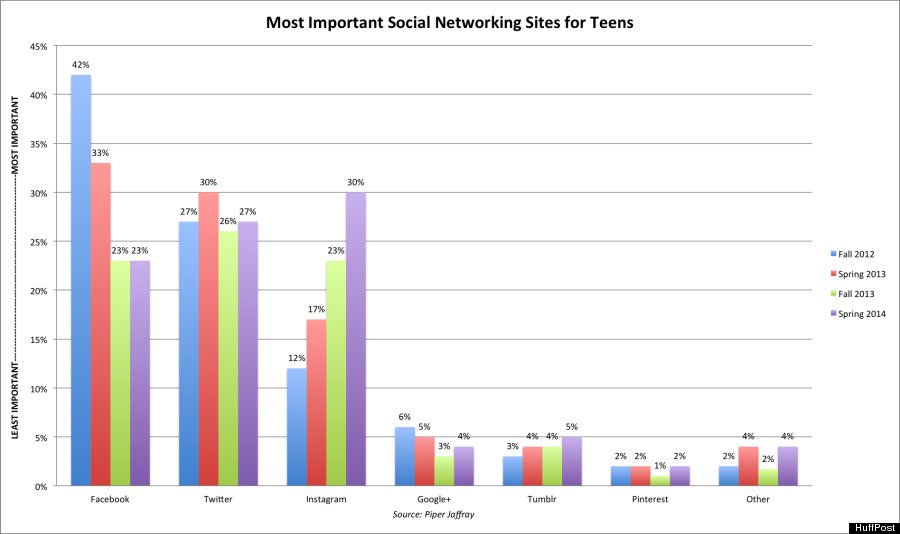I’ve been watching my fifteen year old daughter’s social media habits recently and noticed some interesting patterns developing:
- she uses Facebook very rarely, as opposed to constantly around a eighteen months ago, and only to message her older sisters who live in another country
- she uses Whats App, Instagram, Snapchat and Tumblr a lot for communicating with her friends, posting photos and videos and checking out what’s ‘cool’
- She uses YouTube a lot and follows a whole range of young vloggers who talk about the teenage cosmos
- Email is pretty much a dinosaur
- She doesn’t use Twitter (although the statistics show that this is not a normal teen trend)
- Her mobile phone is used for all of the above and almost never leaves the palm of her hand
According to new statistics, she seems to have a pretty typical social media usage profile for the under 20s.
For an organisation involved in connecting with young people, what could this mean?
In an earlier post I looked at the potential end of Facebook (Facebook is Dead? Re-examining Social Media Assumptions) . New statistics support that, at least with the under 20 age group, there is a steady retreat from Facebook or no volition to sign up to Facebook as a new user. Facebook in the meantime, like many of its competitors, is well aware of this bleeding out of teenagers, and is busily acquiring or trying to acquire those ‘hot’ social media start-ups that are attracting the teenage users.
A recent article in the Huffington Post (full article here) pulls together some of the stats and commentary:
In less than two years, the share of teens who picked Facebook as the top social media service in their lives has nearly halved from 42 to 23 percent, while Twitter flirted briefly with being their go-to social site before being overtaken by Instagram. Since the fall of 2012, the number of teens who see Instagram as the epicenter of their social lives has more than doubled, from 12 to 30 percent.
This nomadic impulse has had social media sites chasing after teens. And they’ve actually had some success: What teens have really done over the past two years is leave Facebook for Facebook.
For most of its life, Facebook merely cloned the competition. Yet starting with its acquisition of Instagram in 2012, Facebook has embarked on a unite-and-conquer strategy, seeking to expand its empire and hold on to our time by buying any service on which we socialize. Likewise, Twitter and Yahoo, with services like Vine and Tumblr, respectively, have tried to ensure that when teens ditch them, they’ll jump to one of their other offerings. It’s the fashion world’s model, adapted for tech: Social networks are seasonal, so you’d better have the next trendy offering ready to woo the especially-jumpy — and especially-engaged — teen audience.

I especially like the reference to the ‘nomadic impulse’ and I think the keeping up, responding to and trend-tracking of that impulse among young people is where organisations need to direct their attention. It involves flexible strategies, rapid responses and a constant mapping of where young people are currently located within the social media landscape. Throwing out a campaign on Facebook is no longer enough, in fact, it may even be counter productive.
Certainly, defining and responding to the latest teenage social media ‘oasis’ requires a far more aware and adaptive social media strategy but it would seem that this will become the only way to engage the fickle social media preferences of young people in the future.



